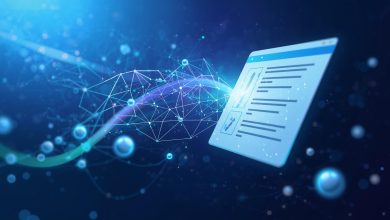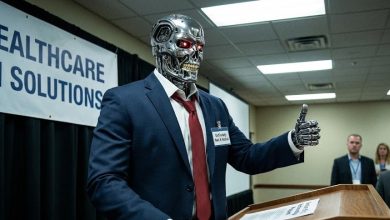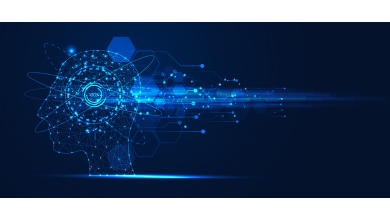
In 2025, marketing leaders working in startups to Fortune 500 global brands aren’t just dabbling in AI, they’re embracing it as a game-changing force in becoming a smarter business. As the technology evolves at rapid speed, so do the challenges of navigating complex setups, unlocking its efficiencies, and staying ahead of the curve. But amid algorithms and automation, authenticity and human customer experience are more vital than ever in a brand’s success. So how do marketers strike the balance of using AI agents as business collaborators while keeping the “human in the loop” for strategic decisions, quality assurance, and complex tasks?
The answer lies in clarity and customization.
It’s paramount to invest in AI collaboration to supercharge creative and marketing workflows—freeing up time, amplifying impact, and helping brands stay emotionally connected to the audiences they serve. Here’s how:
The Starting Line
Integrating AI into an organization’s marketing ecosystem isn’t about just keeping up, but getting ahead. From streamlining processes to understanding data more efficiently to enhancing customer support, AI empowers teams to become a more proactive and seamless communications arm for the business
Start by mapping out current operations: tasks, roles, workflows, and team structures. Then, challenge the status quo. Which repetitive tasks drain time and creativity? Poke holes in where efficiencies can be made. This is where AI shines.
Don’t aim for perfection out of the gate. Begin with one task to experiment with and refine. Yes, it’ll take time upfront—but the payoff is exponential. Done right, this approach frees your team from the mundane and unlocks space for creative and strategic thinking.
It’s critical to set ground rules. Define what the AI standards are for your organization and implement a guide on how it should-and shouldn’t-be used. This builds trust, creates transparency, and ensures your teams stay authentic while leveraging AI’s full potential.
Training AI agents helps to support various stages of the creative and marketing workflow. Use AI agents in business development to uncover data patterns of consumer behavior that can accelerate deal closures while optimizing the technology to spot trends in advertising and website traffic to drive client innovation. On a daily basis teams can use automation to create on-brand content. By implementing these processes, you enhance both the efficiency and resilience of your operations—ultimately delivering stronger results than ever before.
Why Humans Are the Critical Piece in the Marketing Funnel
AI is moving fast- and so are jobs roles. And yes there is a lot of uncertainty, but there’s also a ton of opportunity. As automation becomes standard, what will differentiate companies is fostering human connection. This is a lesson I learned from Alison Wyrick-Mendoza, Market & Transformation Consultant with ASTM International who captured this pointedly:
“Human capital will become the premium experience. We’ve seen this before with the Industrial Revolution. As machines made goods cheap and plentiful, a counter-movement emerged called the Arts and Crafts Movement. It championed a return to hand-craftsmanship, valuing the unique, personal qualities that mass-produced items lacked. As AI makes creation effortless, we’ll instinctively crave the flaws and stories that only human hands can make. The true value won’t be in the final product, but in the tangible connection to the person who made it, something a machine can never give us.”
This has really struck a cord with me. It’s not just a smart take but really was an eye-opening moment in how I approached AI marketing. I think a lot of teams who are deep in the trenches, onboarding AI agents as collaborators, will feel the same way.
Evolving the Agency-Client Relationship
As technology continues to evolve, we can’t expect business to remain unchanged. AI is reshaping traditional agency-client dynamics. Clients can now manage simpler content creation in-house while turning to agencies for more complex initiatives and strategic guidance.
And that’s perfectly okay. In fact, clients should feel empowered to use AI for straightforward communication, static posts, and other efficiency-driven tasks. This is not a threat. Think of it as another opportunity to collaborate together differently. As an agency leader, it’s my role to help provide the roadmap for this while delivering that premium “human in the loop” experience. This means bringing creativity, breakthrough communication strategies, and a keen-eye for quality assurance and discernment, especially as AI tools become more widespread.
Why B2B Industries Have The Most To Gain
AI can play a big role in shaping marketing strategies across nearly every industry—whether you’re a direct-to-consumer brand or a B2B company. And if you’re in this space and not tapping into what AI can do for your business, you’re definitely leaving opportunities on the table. These organizations often run leaner marketing teams, so AI can help fill the gaps—streamlining strategy and operations. On the customer-facing side, B2B companies can lean more on automation, while consumer-facing brands usually need a deeper emotional connection to really resonate with their audience.
To put it simply: this isn’t the moment for marketers to hesitate when it comes to AI. When used strategically, AI streamlines workflows, captures valuable data, and scales how we connect with audiences. These aren’t just efficiencies—they’re the building blocks of exceptional customer experiences.
Yes, AI will continue to evolve. But it cannot replace the human in the loop of the marketing funnel.
As marketers, we are the fuel that drives the AI engine. We bring innovation. We deliver creativity. We build human connections. The real power lies in using AI to support those strengths—not replace them.




